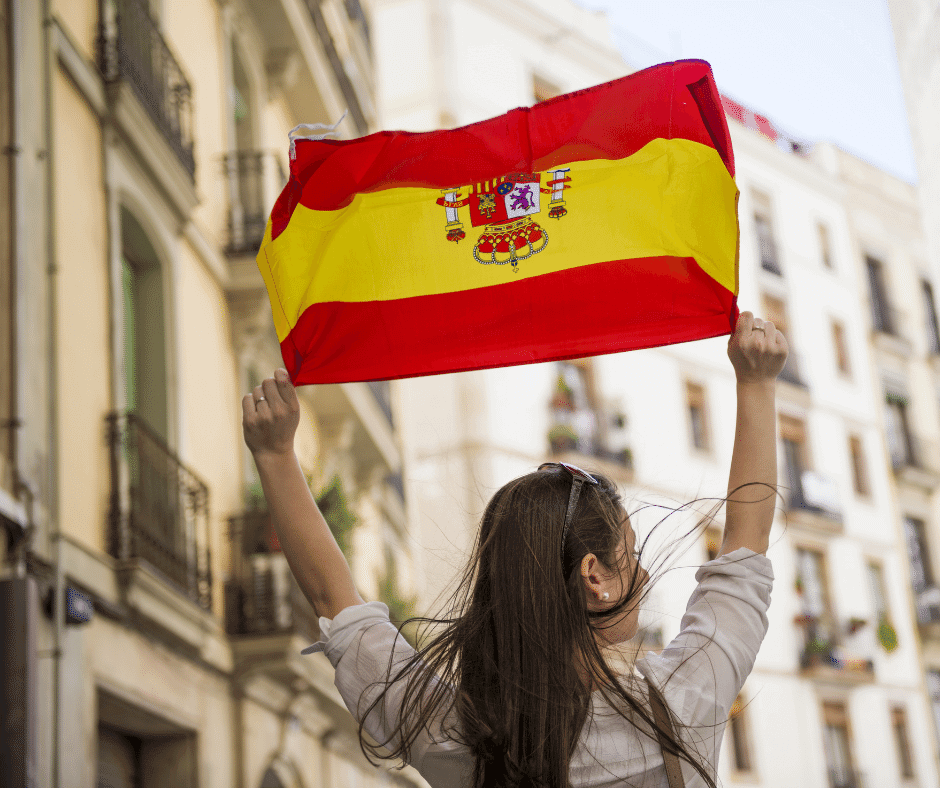Spain, a land of sun-drenched landscapes, passionate people, and a rich history, offers a cultural landscape as diverse and captivating as its geography. From the fiery rhythms of flamenco to the time-honored tradition of tapas, and the exhilarating spectacle of bullfighting, Spain invites you to immerse yourself in a world where art, music, gastronomy, and celebration intertwine.
Flamenco: A Dance of Passion and Soul
No exploration of Spanish culture is complete without experiencing the raw emotion and artistry of flamenco. More than just a dance, flamenco is a powerful form of expression, a conversation between the cantaor (singer), the bailaor/bailaora (dancer), and the guitarrista (guitarist).
- The Essence: Flamenco is deeply rooted in the Andalusian region of southern Spain, with influences from Gypsy, Moorish, Jewish, and Spanish cultures. It conveys a range of emotions – joy, sorrow, love, and loss – through intricate footwork, graceful hand movements, and soul-stirring vocals.
- The Experience: Attend a tablao (flamenco club) for an authentic experience. These intimate venues provide a setting where you can feel the intensity of the performance up close. The music, the dance, and the atmosphere create a sensory experience that is both captivating and unforgettable.
- Beyond the Stage: Consider taking a flamenco class to learn the basic steps and understand the nuances of this art form. Many cities offer workshops for beginners, allowing you to connect with flamenco on a deeper level.
Tapas: A Culinary Journey Through Spain
Tapas are more than just small plates of food; they are a way of life in Spain. This culinary tradition encourages socializing, sharing, and savoring a variety of flavors in a relaxed and informal setting.
- The Tradition: The origin of tapas is debated, but the most popular story suggests that they originated as small snacks served to cover (tapar) drinks, preventing flies from getting in. Over time, these simple snacks evolved into the diverse and delicious tapas we know today.
- The Variety: Tapas vary from region to region, showcasing local ingredients and culinary specialties. From patatas bravas (potatoes with spicy sauce) and gambas al ajillo (garlic shrimp) to jamón ibérico (Iberian ham) and tortilla española (Spanish omelet), there is a tapa to suit every palate.
- The Experience: Embark on a tapeo (tapas crawl), hopping from bar to bar, sampling different tapas and enjoying the lively atmosphere. This is a fantastic way to discover the local cuisine and connect with the community.
Fiestas: Celebrating Life with Passion and Joy
Spain is renowned for its vibrant festivals, or fiestas, which are an integral part of the country’s cultural identity. These celebrations are often steeped in tradition, religious significance, and a healthy dose of revelry.
- Las Fallas (Valencia): This spectacular festival in Valencia features elaborate papier-mâché figures (fallas) that are paraded through the streets and then set ablaze in a breathtaking display of fireworks and pyrotechnics.
- Semana Santa (Holy Week): Celebrated throughout Spain, Semana Santa is a deeply religious festival that commemorates the Passion of Christ. Processions with elaborate floats and penitents fill the streets, creating a somber yet moving spectacle.
- San Fermín (Pamplona): Known worldwide for the Running of the Bulls, San Fermín is a week-long festival in Pamplona that attracts thrill-seekers and party-goers from around the globe.
- La Tomatina (Buñol): The world’s largest tomato fight takes place in the town of Buñol, near Valencia, where participants hurl tomatoes at each other in a chaotic and fun-filled event.
Bullfighting: A Controversial Tradition
Bullfighting, or corrida de toros, is a deeply ingrained part of Spanish culture, but it is also a controversial tradition that sparks passionate debate.
- The Spectacle: Bullfighting is a highly ritualized spectacle that involves a matador facing a bull in a series of choreographed movements. The goal is for the matador to demonstrate courage, skill, and artistry.
- The Debate: Animal rights activists strongly oppose bullfighting, arguing that it is cruel and inhumane. Proponents, on the other hand, view it as a cultural tradition and an art form.
- The Experience: Attending a bullfight is a unique cultural experience, but it is important to be aware of the ethical considerations involved.
Architecture and Art: A Legacy of Innovation
Spain’s artistic and architectural heritage is a testament to its rich history and diverse cultural influences.
- Gaudi’s Barcelona: Antoni Gaudí’s whimsical and innovative architecture is a defining feature of Barcelona. His masterpieces, such as the Sagrada Familia, Park Güell, and Casa Batlló, are architectural marvels that attract visitors from around the world.
- The Alhambra (Granada): This stunning palace and fortress complex in Granada is a masterpiece of Moorish architecture. Its intricate details, lush gardens, and panoramic views offer a glimpse into Spain’s Islamic past.
- The Prado Museum (Madrid): One of the world’s most renowned art museums, the Prado Museum houses an impressive collection of Spanish masters, including Goya, Velázquez, and El Greco.
Learning the Language
While not an "activity" in the traditional sense, learning Spanish is a cultural immersion in itself. Understanding the language unlocks deeper connections with locals, allows for a richer appreciation of literature and film, and enhances your overall travel experience.
Beyond the Tourist Trail: Exploring Regional Variations
Spain is not a monolithic entity; each region has its own distinct culture, traditions, and identity.
- Galicia: Explore the Celtic heritage of Galicia, with its bagpipe music, seafood cuisine, and stunning coastal landscapes.
- Basque Country: Discover the unique culture and language of the Basque Country, a region known for its independent spirit and culinary excellence.
- Catalonia: Immerse yourself in the vibrant culture of Catalonia, with its own language, traditions, and artistic heritage.
Conclusion: An Invitation to Explore
Spanish cultural activities offer a captivating blend of tradition, passion, and innovation. Whether you are drawn to the fiery rhythms of flamenco, the culinary delights of tapas, or the grandeur of Spanish architecture, Spain invites you to immerse yourself in its vibrant cultural tapestry and create memories that will last a lifetime. Beyond the well-known attractions, seek out local festivals, explore regional specialties, and engage with the people to truly experience the heart and soul of Spain. It’s a journey that will enrich your understanding of the world and leave you with a profound appreciation for the beauty and diversity of Spanish culture.


